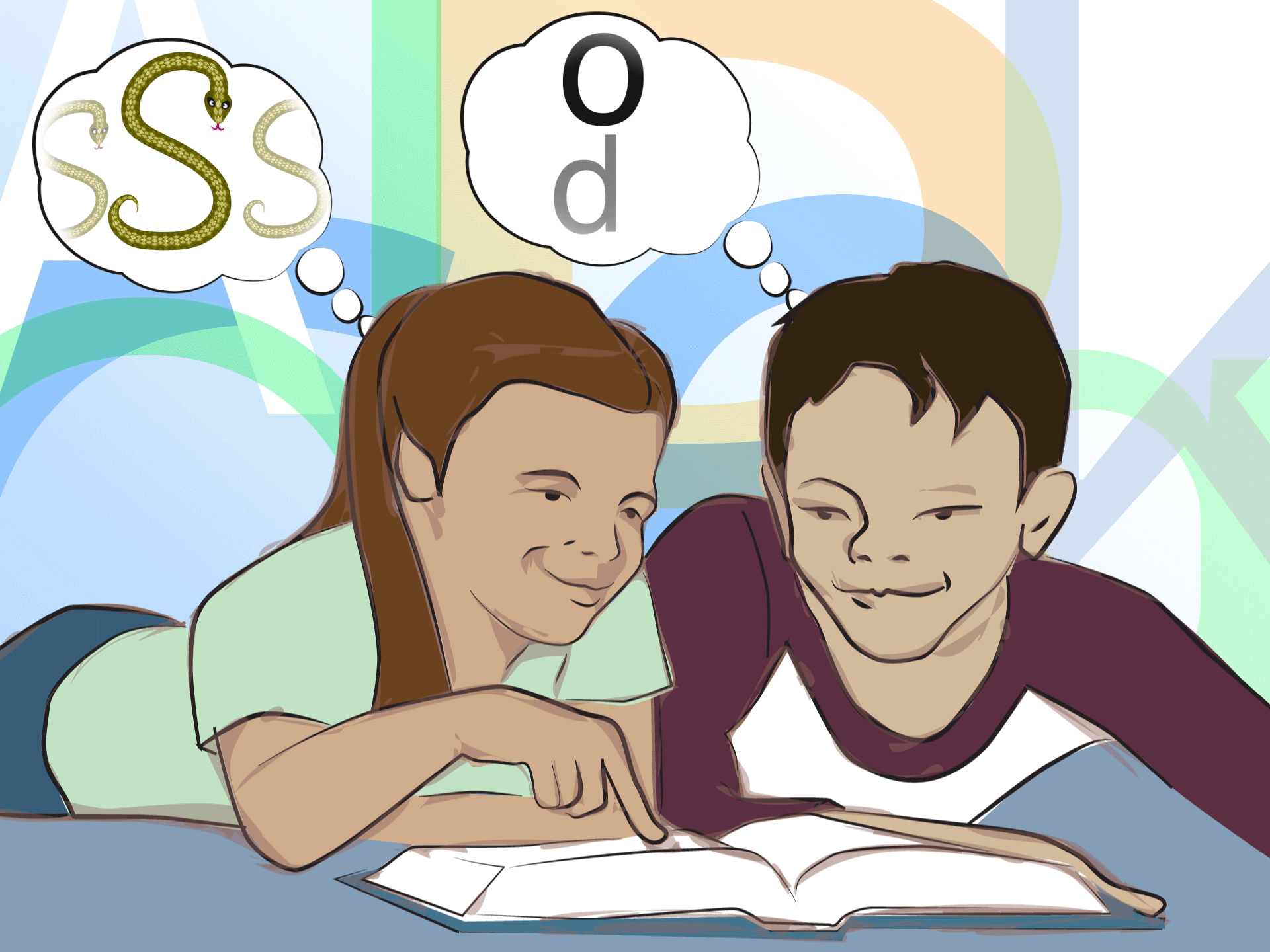
Now let’s imagine Chris. Chris is also five and is a bit more sheepish than Alex. Arriving at kindergarten, Chris has some concept of what reading is. When he picks up a book and sits next to Alex, he too looks at the bright pictures. But he doesn’t understand what Alex is doing when she traces her finger on that worm-like like letter and hisses like a snake “Essssssss.” When the class plays a game where they match pictures that start with the same sound, Chris is quickly confused. “Boy and Ball both start with the sound /b/,” Alex tells Chris. His teacher, walking around greeting the new students notices Alex and Chris and makes a mental note to revisit as soon as possible. The teacher does not know what pre-literacy skills each individual child brings to the classroom. Yet the teacher must create a curriculum that provides an enriched literacy environment to all children. They are not only tasked with fostering a desire to read in their students. They must also recognize those who struggle and try to “catch” them, before they fall.
-
- Auditory
- related to hearing
- Genes
- the inherited biological ‘recipe’ for appearance and other individual characteristics
- Literacy
- the ability to read and write
- Neurons
- cells located in the brain and throughout the body that are specialized to communicate messages
- Phoneme
- the smallest unit of speech (a sound)
- Phoneme “play”
- manipulating sounds that make up words
- Phonological awareness
- the ability to identify and manipulate individual sounds in spoken language
- Primary visual cortex
- an area in the brain responsible for interpreting visual information
- Retina
- neural cells at the back of the eye that are sensitive to light
- Skilled reader
- a reader who is able to focus on comprehension, rather than on sounding out words
- Visual word form area
- the area of the brain responsible for recognizing words during reading